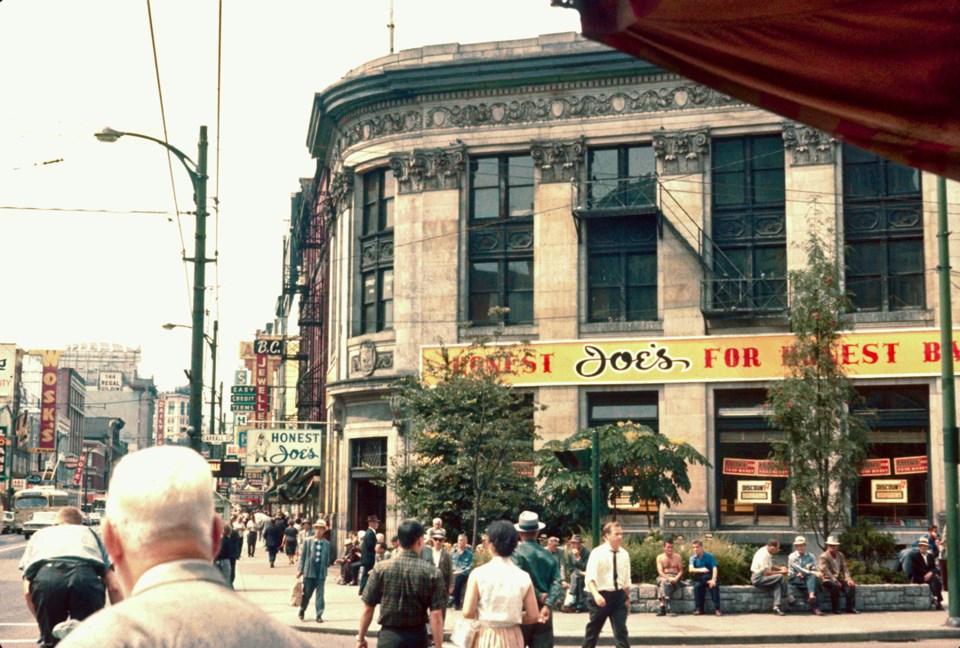A Vancouver time travelogue brought to you by Past Tense.
A big headache for early Vancouver commuters was the CPR’s right-of-way that cut a diagonal line from Burrard Inlet to False Creek and created an annoyance and hazard at several street crossings. After years of mulling over the problem, the solution came in 1932 with the construction of the Dunsmuir Tunnel.
Submerging train traffic freed up land for other uses and a proposal for a new pocket park on the triangular patch at Carrall and Cordova was well received for an area with little green space. The Sun argued that such parks were “breathing spaces for the masses” and that it would “add new value and a new tone to every piece of property in that district.” The mayor thought it would be a great “green spot” for the itinerant workers mulling about waiting for work from the many employment agencies in the area. The Pioneer Association took an interest in the proposed park site because it was adjacent to the first City Hall after the Great Fire.
Somewhere in the negotiation process, the park site changed from Cordova and Carrall to Hastings and Carrall, likely because a building stood on the Cordova site and because the CPR had promised the bank operating in the old Merchant’s Bank building that nothing would be erected to block their sunlight. The City later realized it couldn’t afford to buy park space and forego property tax revenues during the Depression. In 1938, the CPR deeded the land to the City anyway, and Pioneer Place was born.
By 1960 the park was a popular hangout for “immigrant laborers, old age pensioners and bay rum drinkers” who came to socialize and feed the pigeons. There was also a move to “do away with the littered, pigeon-killed grass behind the battered wire fence that now wastes the space and depresses the area,” and so what locals had come to call Pigeon Park was paved and planters and benches added. Twelve years later, the City gave in to merchants who complained that the frequenters of Pigeon Park were not “worthy people,” but “objectionable” derelicts and bad for business. The planters and benches were removed and the park was no more.
The barren concrete triangle didn’t last and eventually benches and planters came back and locals continued to use it as a watering hole. The last controversy was when Pigeon Park was renovated in 2009 and some neighbourhood residents took exception to a construction sign referring to it as “Pioneer Place.” It turned out the City wasn't trying to name Pigeon Park out of existence, but rather that most people had never heard the park’s official name. The park is still heavily used by people with no place of their own to socialize, and on Sundays is the site of a hugely popular outdoor market.
Source: Photo from City of Vancouver Archives, #780-769




